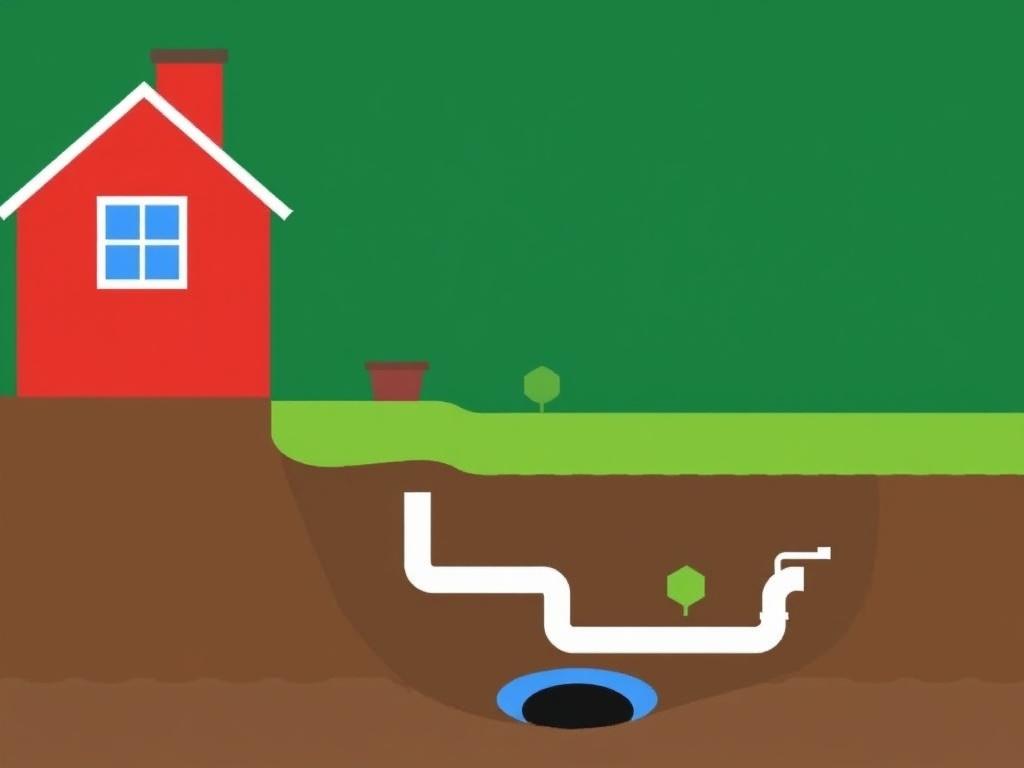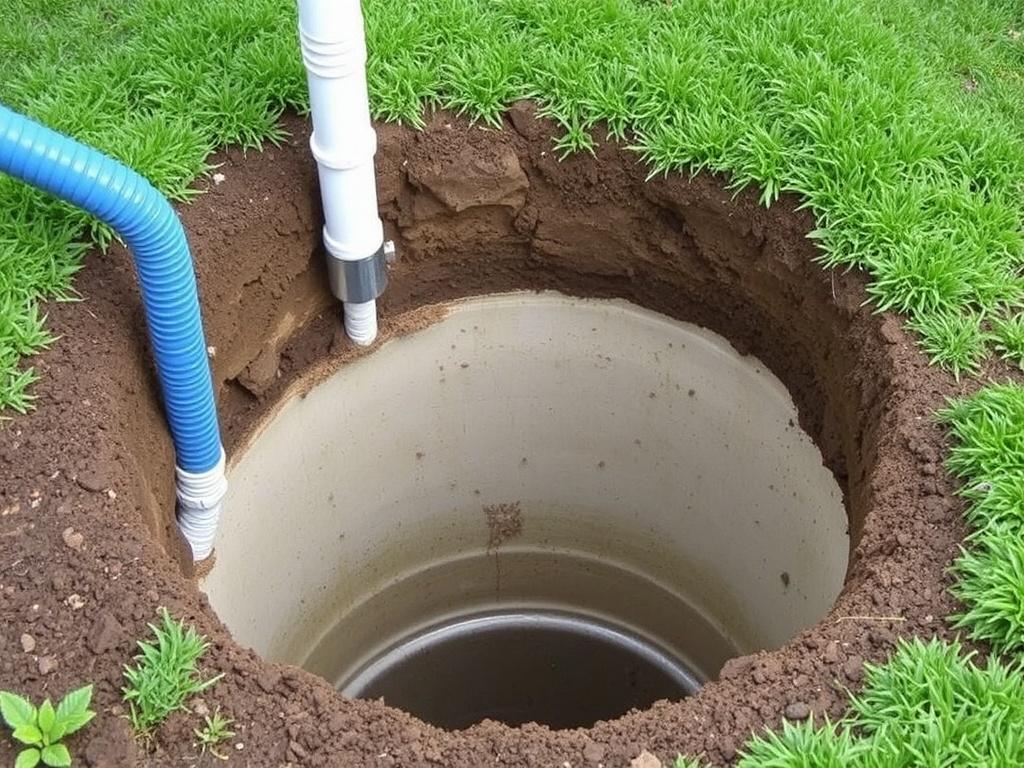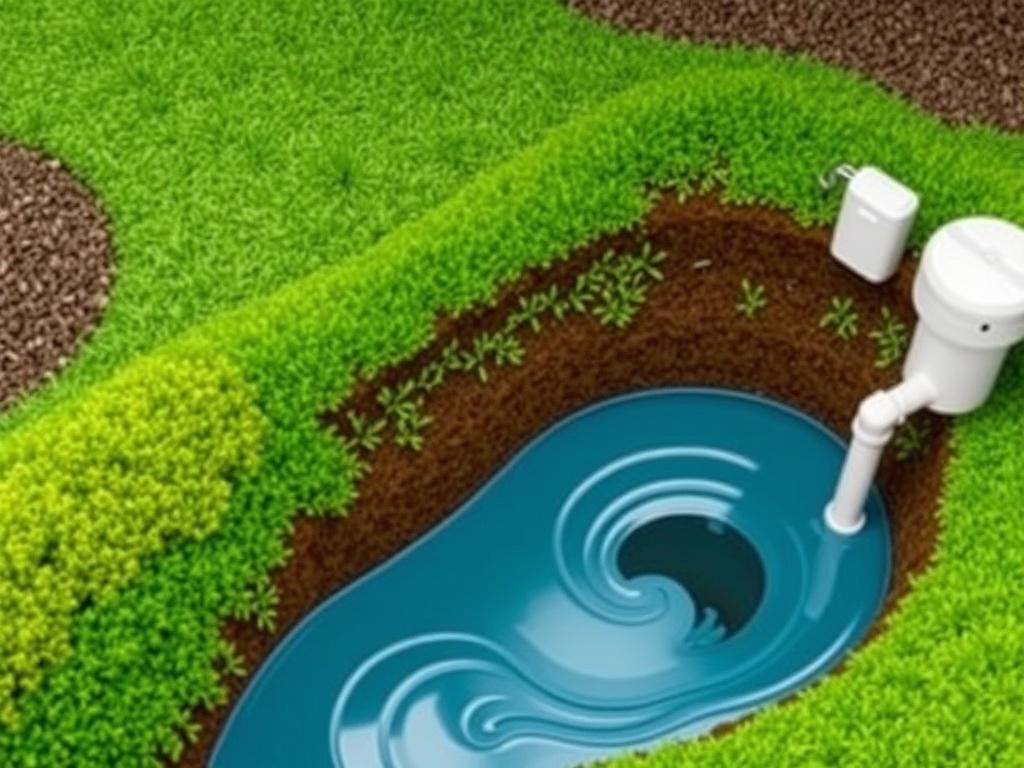Septic systems are quietly at work beneath millions of homes, efficiently managing household wastewater and keeping our environment clean. Despite their crucial role, many homeowners don’t give much thought to their septic system until a problem arises. Understanding common septic system problems and solutions can save you from costly repairs, unpleasant odors, and environmental damage. In this article, we will explore the most frequent issues that septic systems face, discuss practical solutions, and offer tips to maintain your system’s health over the long term.
- What Is a Septic System and How Does It Work?
- Common Septic System Problems
- 1. Clogged or Full Septic Tank
- 2. Drain Field Failure
- 3. Septic System Backup
- 4. Tree Root Intrusion
- 5. Plumbing System Problems
- How to Diagnose Septic System Issues
- Practical Solutions to Common Septic System Problems
- Regular Maintenance and Tank Pumping
- Water Conservation Practices
- Proper Waste Disposal Habits
- Drain Field Care and Landscaping
- Addressing Root Intrusion
- Fixing Plumbing Issues
- Professional Repairs for Drain Field Problems
- Tips for Long-Term Septic System Health
- Table: Signs of Common Septic Problems and Recommended Actions
- When to Call the Professionals
- Wrapping It Up: Living in Harmony With Your Septic System
- Conclusion
What Is a Septic System and How Does It Work?
Before diving into common septic system problems and solutions, let’s quickly review what a septic system is and how it functions. A septic system is an underground wastewater treatment structure, often used in rural areas or homes not connected to municipal sewer systems. The system includes a septic tank and a drain field or leach field.
When wastewater leaves your house, it flows into the septic tank, where solids settle at the bottom, forming sludge, while lighter materials like oils and grease float to the top, creating scum. The clearer liquid in the middle flows out to the drain field, where it percolates into the soil, undergoing natural filtering. This process depends on a balance between solid waste breaking down and the soil’s ability to absorb the liquid effluent.
Understanding the system’s basic function helps homeowners appreciate why it needs regular care and what happens when problems arise.
Common Septic System Problems

1. Clogged or Full Septic Tank
One of the most common septic system problems is a clogged or full septic tank. Over time, sludge and scum build up and reduce the tank’s capacity. If not pumped out regularly, solids can overflow into the drain field, causing blockages.
Signs to Watch For:
- Slow drainage in sinks and toilets
- Unpleasant odors around the septic tank area
- Wet or soggy spots in the yard near the drain field
- Backup of wastewater into the home
Regular pumping every 3-5 years is the primary solution. Hiring a professional to inspect and pump the tank before problems escalate is essential.
2. Drain Field Failure
Sometimes miscalled “leach field failure,” drain field failure is a serious and costly problem. The drain field can become saturated and fail to absorb wastewater properly. This leads to ponding, foul smells, and sometimes overflow.
Common Causes:
- Too much water entering the system too quickly
- Soil compaction or flooding around the drain field
- Tree roots invading drain lines
- Improper system design or aging infrastructure
Solutions depend on the severity but can include aeration, adding new drainage trenches, or complete replacement of the drain field.
3. Septic System Backup
Backups are a homeowner’s nightmare—when wastewater backs up into sinks, tubs, or toilets, it creates a health hazard and unpleasant mess. Backup can stem from blockages in the pipes leading to or from the tank, or the tank itself being full.
Preventive measures and quick action such as calling a septic service specialist for inspection and clearing blockages are crucial to resolving this issue effectively.
4. Tree Root Intrusion
Trees and shrubs planted too close to the septic tank or drain field can cause roots to enter and damage pipes, leading to leaks and blockages. Roots seek moisture and nutrients, making septic system pipes a prime target.
Detecting root intrusion early through professional inspections prevents major damage. Solutions include careful landscaping, root barriers, and sometimes replacing damaged lines.
5. Plumbing System Problems
Sometimes, what appears to be a septic system problem is actually caused by the house’s plumbing system. Broken pipes, cracked sewer lines, or misaligned connections can cause wastewater to drain improperly or leak.
Working with a plumber and septic technician to diagnose plumbing problems and septic issues helps identify and correct the correct source of the problem.
How to Diagnose Septic System Issues
Knowing common septic system problems and solutions begins with proper diagnosis. Here are some steps any homeowner can take to identify issues before they worsen:
- Regular Visual Inspection: Walk over the drain field and tank covers, checking for wet spots, foul smells, or damaged lids.
- Monitor Water Usage: Excessive water use can strain your system; note any changes in household water habits.
- Test Soil Absorption: Professionals can test the soil around the drain field to determine if it’s saturated or clogged.
- Schedule Septic Inspections: Regular inspections by experienced technicians are invaluable.
Additionally, common symptoms like slow drainage, recurring plumbing clogs, and sudden lush grass growth over the drain field are all warning signs.
Practical Solutions to Common Septic System Problems

After diagnosing the issue, applying the right solution is key to restoring your septic system’s health. Here are some common repairs and preventive strategies:
Regular Maintenance and Tank Pumping
Regular septic tank pumping is arguably the single most important preventive measure. It removes accumulated sludge and scum, reducing the risk of tank overflow and drain field clogging. The frequency varies depending on household size, water use, and tank size but commonly occurs every 3 to 5 years.
Water Conservation Practices
Prevent overloading the system by conserving water:
- Fix leaks and dripping faucets.
- Install water-efficient fixtures.
- Spread out laundry loads rather than washing multiple loads in one day.
Reducing water use decreases pressure on the septic system and extends its life.
Proper Waste Disposal Habits
Avoid flushing harmful items such as:
- Non-biodegradable wipes
- Grease, oils, and food scraps
- Medicines and chemicals
- Disposable diapers and feminine hygiene products
These substances can cause blockages or harm the beneficial bacteria in your septic tank responsible for breaking down waste.
Drain Field Care and Landscaping
Protect the drain field by:
- Not parking vehicles or heavy equipment on it to prevent soil compaction.
- Avoiding planting deep-rooted trees or shrubs nearby.
- Diverting roof drains and sump pumps away from the drain field.
These measures help keep the soil beneath the drain field healthy and able to absorb effluent properly.
Addressing Root Intrusion
If tree roots invade the septic system, solutions range from mechanical root cutting to chemical root treatments. In some cases, replacing damaged pipes may be necessary. Preventative landscaping is often the best long-term solution.
Fixing Plumbing Issues
Identifying leaks, cracks, or blockages in the home’s plumbing can prevent septic system overload or backups. Regular plumbing maintenance and swift repairs are vital.
Professional Repairs for Drain Field Problems
When the drain field shows signs of failure, contact septic professionals. Options include:
| Problem | Potential Repair | Description |
|---|---|---|
| Saturated Drain Field | Add Aeration Systems | Introduce air into the drain field soil to promote bacterial breakdown and evaporation. |
| Compacted or Damaged Soil | Soil Replacement or New Trench Installation | Excavate and replace damaged soil or install additional trenches for better absorption. |
| Root Damage | Pipe Replacement and Root Barriers | Remove damaged pipes and install physical barriers to prevent further intrusion. |
Many repairs can be expensive, which is why prevention and early intervention are so important.
Tips for Long-Term Septic System Health
Maintaining a septic system is not only about addressing problems as they arise—it’s about fostering good habits that minimize those issues from the beginning.
- Educate Your Household: Everyone in the home should know what can and cannot go into the septic system.
- Keep Records: Track pumping dates, inspections, and repairs for future reference.
- Be Mindful of Household Chemicals: Limit use of harsh cleaners, bleach, and antibacterial products that can disrupt beneficial bacteria in the tank.
- Plan for System Inspection Before Property Transactions: Septic inspections are often required when buying or selling a home with a septic system.
- Use Additives With Caution: Some claim septic additives help maintain systems, but many experts suggest they are unnecessary or even harmful—consult a professional first.
Table: Signs of Common Septic Problems and Recommended Actions
| Sign | Possible Problem | Recommended Action |
|---|---|---|
| Slow draining sinks and toilets | Clogged pipes or full septic tank | Schedule septic tank inspection and pumping, clear household plumbing |
| Strong odors near septic tank or drain field | Tank overflow or gas venting issues | Inspect tank cover, ventilate area, pump tank as needed |
| Wet or mushy ground over drain field | Drain field failure or saturation | Limit water use, call septic professional for diagnosis |
| Backup of sewage into home drains | Blockages, full tank, or pipe damage | Immediate professional service to clear blockages |
| Unusual lush vegetation over drain field | Excess nutrients from system failure | Inspect system and repair drain field |
When to Call the Professionals
Septic systems may look simple on the surface, but they are complex under the ground and require specialized knowledge for repairs and maintenance. While homeowners can manage regular maintenance and watch for warning signs, it’s essential to call professional septic technicians if you notice persistent or worsening symptoms.
Professional services include:
- Detailed system inspections
- Septic tank pumping and cleaning
- Root removal and pipe repairs
- Drain field evaluation and repairs
- Emergency response to backups or spills
Attempting to fix major septic issues without expertise can lead to bigger problems, expensive mistakes, or even health risks. Experienced technicians also provide valuable advice on how to improve your septic system’s performance.
Wrapping It Up: Living in Harmony With Your Septic System

Taking good care of your septic system is not just about avoiding problems—it’s about protecting your home, health, and the environment. By understanding common septic system problems and solutions, you empower yourself to manage your system confidently. Regular maintenance, mindful household habits, and professional inspections keep your system functioning efficiently for years.
Whether you’re a new homeowner or someone who’s been living with a septic system for decades, these insights can help reduce worry and expense, while giving you peace of mind that your septic system will continue working quietly and effectively beneath your feet.
Conclusion
In the world beneath our homes, septic systems work quietly to manage wastewater, yet they face a number of common problems such as clogged tanks, drain field failure, backups, root intrusion, and plumbing issues. Knowing how to spot warning signs and what solutions are available empowers homeowners to protect this vital system. Regular pumping, water conservation, careful waste disposal, and professional inspections form the cornerstone of effective septic maintenance. When repairs are needed, relying on septic experts ensures problems are solved safely and efficiently. By adopting good septic system habits and addressing problems early, you can enjoy a healthy, trouble-free septic system that safeguards your property and the environment for years to come.
Помогла вам статья?






